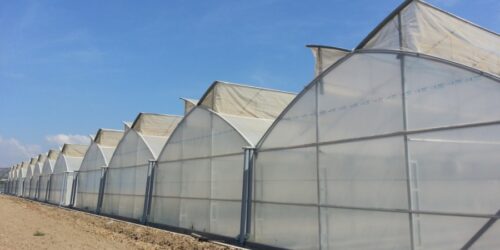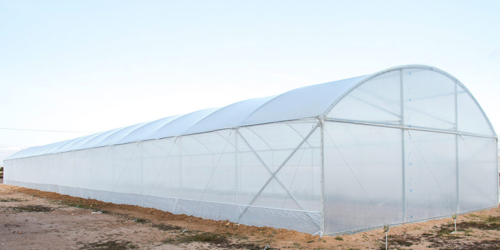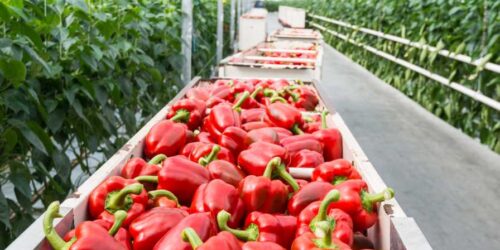Greenhouse Farming in India- Introduction
Agriculture has been the foundation of India’s economic progress and the past 50 years have proved a strong correlation between agricultural growth and economic prosperity. Our current agricultural sector has been a combination of outstanding promises and some missed opportunities.
Our current agricultural productivity is nowhere near other developed or some of the developing countries. There was never a doubt that there is an urgent need for newer and more advanced technologies which can greatly improve the productivity, profitability, sustainability of our major farming systems. One such technology is greenhouses.
Greenhouse Farming & Global Scenario
Greenhouse farming as a method is centuries old however over 95% of plants grown in India are still on open fields. Open field farming has been in existence since we learnt to grow plants under natural environmental conditions but in some regions where the climatic conditions are extreme for example wind, cold, precipitation, excessive radiation, extreme temperature, insects and diseases – few or no crops can be grown; and therefore new ways have been developed to grow high value crops by providing protection from the extreme climatic conditions, which was termed as Greenhouse Farming.
The primary concept of a greenhouse is to create ideal microclimate around the plants. A protected environment made of structures with walls and ceiling often made of transparent polysheet in which plants are grown by creating ideal climatic conditions by controlling exposure to the sun and regulating the heating/cooling inside the greenhouse, protecting its crops from the unfavorable weather conditions outside. Like all things, tech greenhouses farming has become extremely high tech today which enables maximization of production of vegetables, flowers or fruits in any location or weather conditions by automating the control of the micro climate, irrigation and fertigation. Other tech that is found in most commercial greenhouses include computer or app operated heating/cooling systems and lighting.
Most countries today use greenhouse farming on a commercial scale for example USA has over 15000 hectare for greenhouse farming with an estimated revenue of over 2.8 billion US $ and these numbers are rising YoY. Spain is one of the global leaders in greenhouse technologies and is also known as the fruit and vegetable capital of Europe has over 28,000 hectare under greenhouse farming and Italy has over 19,500 hectare as greenhouses
Canada’s greenhouse industry prices their produce twice as much as open field produce. Hydroponics is a popular concept and consumers in Canada prefer vegetables grown with hydroponics. Netherlands has been a major exporter of flowers and vegetables grown in the greenhouses. The Dutch have over 89,600 hectare used under greenhouses and they use some of the most advanced technologies in their greenhouses. Greenhouses in the Gulf countries are very popular also because of their extreme climatic conditions. Israel has 15,000 hectare under greenhouses and Turkey has over 12,000 hectare. Egypt has about 1000 hectare under greenhouses mainly tunnel type structures.
In Asia, China and Japan are leaders in greenhouse technology and its use. China has adopted greenhouse faster than any country and today China has over 51,000 hectares under greenhouse. South Korea has more than 21,000 hectare under greenhouses for production of flowers and fruits. Greenhouses in the Philippines make it possible to grow crops in spite of excessive rains. Therefore, greenhouse farming is being used in all types of climatic conditions.
In India greenhouse farming started during the 1980’s on a small scale mainly used as research centers. In the recent past a lot of emphasis has been given to agricultural export and therefore the demand for greenhouse farming has been on the rise since.
Harvel Greens in association with the Govt of Madhya Pradesh have set up a demonstration centre known as Center of Excellence to introduce this technology to the local farmers.
Greenhouses have brought a huge respite in Ladakh region enabling them to grow vegetables almost year round given their extreme climate. North-East uses greenhouse farming because of the heavy rains. Several commercial large scale floriculture ventures have come up in Maharashtra, Tamil Nadu and Karnataka to meet domestic and global demand.
Government’s liberalization policies and developmental initiatives have encouraged corporates as well as startups to invest in export focused greenhouses in India. Area under protected cultivation in India is estimated to be over 6000 hectares. Government has been encouraging greenhouse farming in the form of subsidies, Infact a lot of the state governments have their own subsidies for the construction of these structures. Telengana in bid to promote horticultural activity pledged to help farmers in the construction of greenhouses. As per the report farmers are to bear 25% of the construction cost and the government releases the rest in tranches. Bihar had raised the subsidised amount to 90% in collaboration with the center and later reduced it back to 50%. National Horticulture Board (NHB) offers Rs.18 lakhs to Rs.25 lakhs details for which can be found on http://nhb.gov.in.
1. What is Greenhouse?
A greenhouse is a structure made of galvanized steel and covered with agricultural polyfilm or shading net or thermal net on all sides of the structure in which plants can be grown in ideal microclimate required by the crop. This technology is important for better space utilization, growing crops in extreme climatic conditions and heavy rainfall areas. The polyfilm on the structure acts as selective radiation filters. The solar radiations are trapped inside the greenhouse retaining the thermal energy emitted by the plants kept inside and this is known as the “greenhouse effect”

2. Why is Greenhouse Important?
The Greenhouse offers the ability to manage the micro-environment in order to provide control over quality and productivity of the crop. It makes it relatively simple to grow plants by protecting them from the outside temperature and other environmental conditions allowing farmers to get substantially better yields.
The primary reason for greenhouse farming is protection from; pest, extreme solar radiation, heavy rainfall & wind. On the other hand it is because of the same reasons why crops are often destroyed in open field farming. Open field farming also leads to poor quality produce due to plants retaining residue of excessive plant protection chemicals.
Greenhouses may be used to enhance plant growth and regulate planting and harvesting cycles by providing optimum growing conditions. It may also be used to overcome the limitations of the environmental factors in certain regions.
Greenhouse enables higher yield from smaller land areas and it can help with crop production throughout the year.
3. Why Greenhouse Technology is Important in India?
Total production of vegetables in India is close to China’s production but India is still far behind in availability of vegetables on a per capita basis. There is an urgent need to increase production of vegetable crops to meet the demand of ever growing population also known as per capita availability of vegetables. There is immense pressure on cultivable land and 90% of our water resources are utilized by agriculture. Therefore the importance of greenhouse farming is immense as production of vegetables is 4-5x as compared to open field farming with lesser utilization of water and the quality of produce is much higher.
India is self dependent as far as food grain is concerned but fruits & vegetables are unavailable to the poor in India because of short supply. A lot of grain farmers are not willing to grow vegetables and fruits and therefore this gap cannot be filled by traditional farming and the only solution to this problem is greenhouse farming.
Netherland & India occupy almost the same land area under floriculture however India’s contribution to world flower export is 1% compared to 70% of Netherland who have pioneered the greenhouse farming in floriculture.
Today quality is equally important as quantity when it comes to agricultural products and both can be achieved at the same time by adopting greenhouse farming because the micro-environment inside the greenhouse can be controlled to produce both quality and quantity of agricultural produce. Within a greenhouse the natural environment is modified using sound engineering principles to achieve optimum plant growth and yield.
Greenhouse farming in essence is a method to potentially produce more per unit area with increased efficiency. Potentially 1 lakh hectare under vegetable cultivation can give an output of over 100 lakh tons of vegetable every year.

4. Advantages of Greenhouse Farming?
The yield can be as much as 10 times higher than open field cultivation
- The output is much more reliable and can be certain to a large extent
- Greenhouse farming is most suitable for vegetables & flowers
- The production can be all year round which can be much more profitable
- Vegetables & fruits can be produced off season again leading to higher profitability
- The produce can be disease free & genetically superior
- Minimal or efficient utilization of chemicals & pesticides can be achieved
- Utilization of water can be minimal by using advanced irrigation systems
- The produce is extremely high quality and is often sold at premium in most countries
- High tech methods like hydroponic, aeroponics and nutrient film techniques are best suited for greenhouse farming

5. Which High Value Crops Are Ideal For Greenhouse Farming?
Greenhouse farming potentially ensures extremely high quality produce in comparison to open field farming. Growing fruits and vegetables is ideal for greenhouse farming because the micro climate can be controlled and higher yield per hectare of land can be achieved. People generally start with simpler crops to start with for example:
- Leafy Greens
- Cucumber
- Tomatoes
- Peppers
- Strawberries
- Spinach

6. How To Start Greenhouse Farming:
Here we will try and cover few steps on how to start a greenhouse project in brief:
Like any farming project, greenhouse farming starts with a piece of land, a site where the greenhouse will be installed along with a clear source of funds in case you are considering taking a horticulture loan. If you are planning to apply for government subsidy then these two steps need to be completed first.
With that out of the way we can start with a brief outline of how to start planning your project in 7 simple steps:
Step 1: Decide which crop or how many different types of crop? This will give a direction to the whole project.
Step 2: Choose the greenhouse style best suited for your climatic conditions
Step 3: Choose type of ventilation required in the green house: Naturally ventilated, Fan & Pad or Retractable system
Step 4: Decide if additions like climate control, meteorological systems etc would be required depending on the weather conditions
Step 5: Decide the design for all four walls, doors, orientattion
Step 6: Decide on cultural practices, medium of growing, irrigation system & fertigation system
Step 7: Decide if you would need automation & fertigation of the system and would misting system be required
